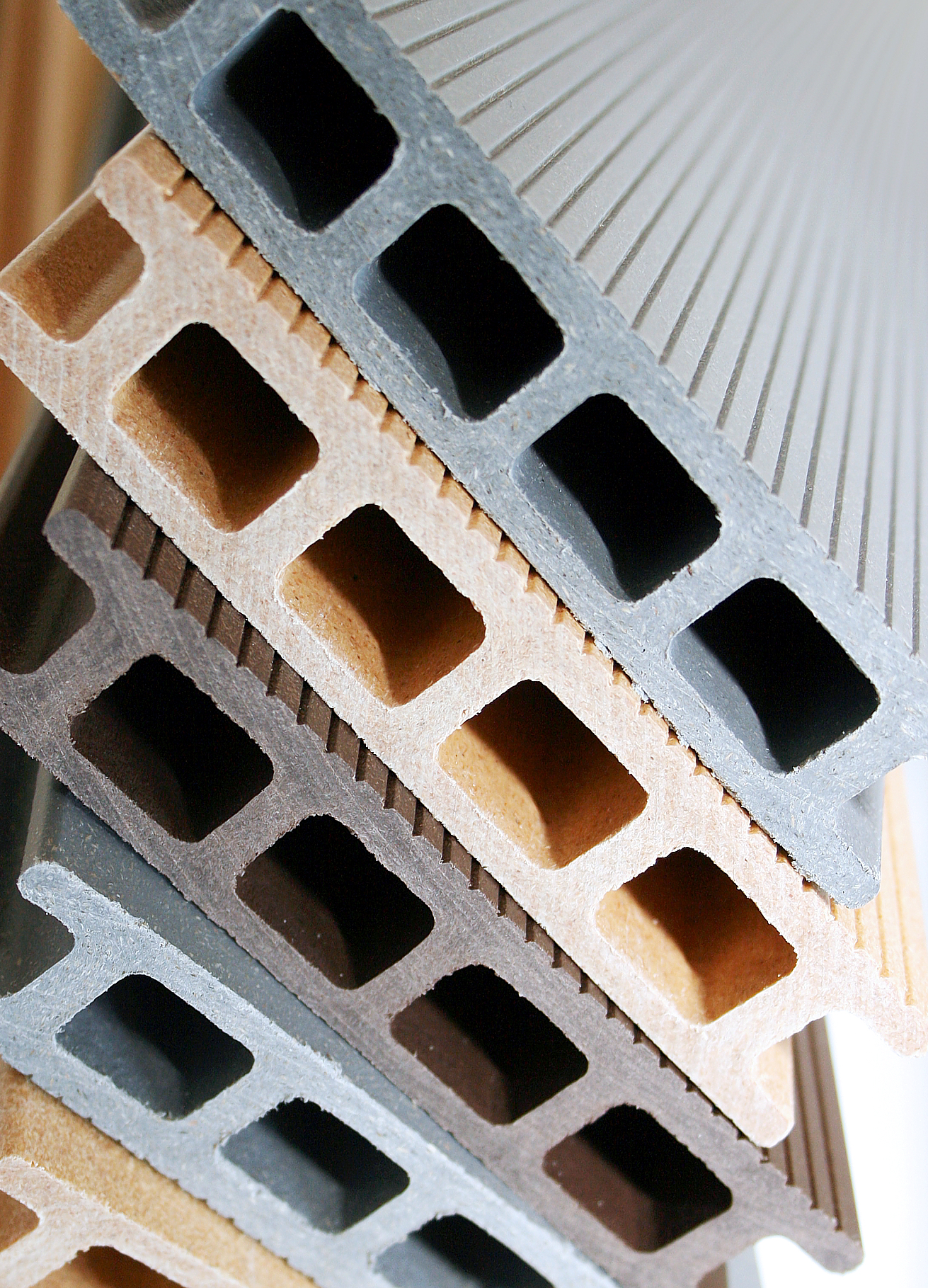In addition to the classic wood-based materials such as particle board and fiberboard, there are a multitude of bio-composite materials such as wood-plastic composites (WPC) or natural fiber-reinforced plastics (NFRP). WPC are significantly more moisture-resistant than solid wood or classic wood-based materials and are therefore used, for example, in the form of decking, privacy fences, furniture and façades. We research the production, coating and bonding of WPC, in particular on the basis of renewable resources. Furthermore, we open up new application and marketing opportunities.
Biocomposites
Research focus
In contrast to the classical, thermoset-bonded wood-based materials such as particle board and fiberboard, WPC can be processed using thermoplastic techniques. WPC consist predominantly of a lignocellulosic component in a proportion of up to 70 percent by mass, a thermoplastically-processable polymer of up to 50 percent by mass, a bonding agent and other additives such as pigments, light stabilizers or lubricants. For their manufacture, processing procedures for plastics are used, such as profile extrusion, injection molding, rotational molding and board pressing techniques (EN 15534-1, 2014). The processing temperature should be below 200 °C in order to avoid thermal decomposition of the wood.
Compared to pure plastics, WPC exhibit, amongst other differences, a higher modulus of elasticity and a higher heat resistance. Compared to solid wood, the strengths and modulus of elasticity of WPC are lower, but nonetheless comparable with OSB and MDF boards. WPC exhibit a considerably lower water absorption and swelling than solid wood and wood-based materials. Accordingly, WPC also achieve a higher dimensional stability and durability than solid wood.
The fact that WPC are extruded from recycled thermoplastics or bioplastics and can thereby substitute products based on juvenile plastics has proved to be advantageous. This process preserves the remaining oil resources. Furthermore, natural fibers such as hemp, sisal, kenaf and flax, agricultural residual material such as wheat straw and rice husks and even paper residues can be used in the production of WPC. Production residues from the manufacture of WPC as well as WPC at the end of its useful life can be recycled again, for which the products are first ground, subsequently melted again and finally processed into new products.
Our expertize includes:
- preparation and additivation of wood and other renewable raw materials for application in WPC and NFRP
- formulation and product development for WPC and NFRP (wood, natural fibers, polymer matrices on the basis of fossil and renewable resources, polymer blends, additivation)
- flame protection of WPC und NFRP
- application of thermomechanically-decomposed wood fibers in the extrusion process
- recycling of WPC and the application of recycled raw materials for WPC
- application of WPC as surface layers for wood-based materials, e.g. OSB
- durability of WPC
- coating and bonding of WPC
- performance of selected material and product tests in accordance with EN 15534 (2014)
- recognized by the Qualitätsgemeinschaft Holzwerkstoffe e.V., Gießen (German quality association for wood-based materials) as a testing body for the monitoring of the quality and testing regulations for products made from wood-polymer materials
 Fraunhofer Institute for Wood Research
Fraunhofer Institute for Wood Research 